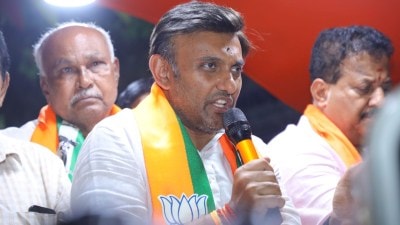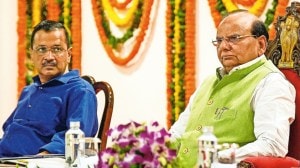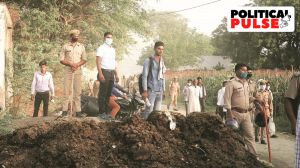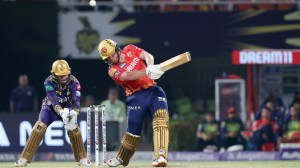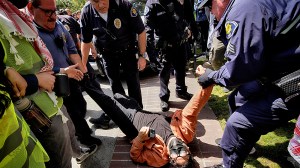- India
- International
From dodgy ID to narco mess, how SIMI terror case fell
Acquitted, 40-year-old Bangalore techie Yahya Kammukutty asks: who will return my 7 years?
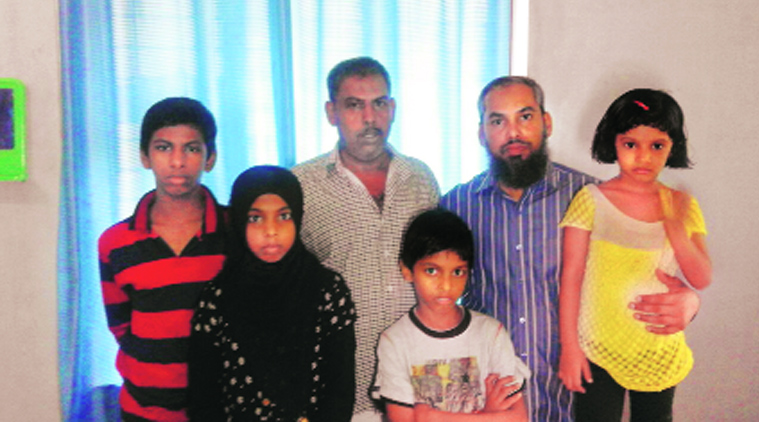 Yahya Kammukutty (second from right) with his family.
Yahya Kammukutty (second from right) with his family.
Twelve days ago, when freedom finally dawned on the life of Yahya Kammukutty, the 40-year-old looked around to find his “success story” in ruins and had one question for “those running this unfair system” — “who will give me my seven years back?”
ALSO READ: ‘Acquittal not end of ordeal, my life is ruined’
Kammukutty, a former Wipro-GE employee, describes himself as “the son of a labourer” from a village in Kozhikode who became a software engineer in Bangalore. But the rest of the world probably knows him better as one of the 17 men arrested in February 2008 by Karnataka Police who claimed they were part of a “SIMI module” that conspired “to commence jihad throughout India”.
Over the next seven years, the case went to trial and dragged on — once, it was on hold for nine months because a video conferencing facility broke down — and then, it simply collapsed, Kammukutty told The Indian Express after a Hubli court ordered his release on April 30.
[related-post]
Finally, Additional Sessions Judge Gopalkrishna Kolli ruled that the prosecution failed to prove the “accused have committed any offence as alleged”. Besides, the judge ruled that the prosecution failed to prove that Kammukutty was part of any “criminal conspiracy”.

The judgment also exposed a number of holes in the police case:
* Kammukutty was arrested from Gurappanapalya in Bangalore by an inspector who was not given a photo or even a description of the suspect by Investigating Officer (IO) S S Khote. The IO later admitted that “thousands of people reside in Gurappanapalya and that they arrested the accused on the road”.
* Khote admitted during cross-examination “that except his interrogation, there is nothing to show that the ninth accused (Kammukutty) was involved in SIMI”.
* The CD of the narcoanalysis conducted on Kammukutty was handed over by the doctor, who conducted it, to Khote on March 1, 2008 who returned it on April 24, 2008 — the doctor submitted her report after that. “No explanation is offered” on why the CD was handed over to Khote in violation of norms, the judge noted. Incidentally, the report says Kammukutty denied any involvement in terrorism.
* The IO also failed to ascertain the contents of some books on religion recovered from Kammukutty’s house that were labelled as “incriminating material”.
* And to top it all, prosecution witnesses denied that Kammukutty had visited places in Goa and Hubli where police claimed the “module” had held “secret meetings”.
Kammukutty believes he was targeted by police because of his association with SIMI in the early 1990s, when he was a student at the then Regional Engineering College (REC) Calicut (now NIT).
“In Kerala, SIMI was a public movement that would raise social issues. But once I got a job and shifted to Bangalore, I lost touch with SIMI’s programmes. I was in US for a year and later shifted to Chennai for another year. After the ban (on SIMI in 2001), there was no contact at all,” he said.
Kammukutty says he was put on trial in November 2010, three years after his arrest. “They asked me whether I had committed the crime or not for the first time after I had already spent three years in jail. The trial took four years,” he said.
Even the trial was not without its dark moments, Kammukutty says.
“I remember one incident that explains it all,” he said. “A former director of Karnataka Institute of Medical Sciences (KIMS), a star witness, was to identify an accused who was a student at KIMS. We were waiting outside when a Head Constable asked who among us was accused number six. I pointed towards Allah Baksh. I then heard the policemen tell the director that the one in the white checked shirt was Allah Baksh. When we entered court, there were two guys inside in white checked shirts. And when the prosecution asked the director to identify Allah Baksh, he pointed to the wrong guy. Everybody in the courtroom laughed, but that was it.”
Then, on May 10, 2008, a bomb blast took place at an empty court room in Hubli, two days before the alleged SIMI activists were to be produced there – the main accused in the blast, a Hindutva hardliner, was killed in jail a year later. And then, the Hubli bar association passed a resolution “not to defend any terrorists”.
In this period, Kammukutty was engaged in another struggle, to obtain bail. First, when police filed the chargesheet, and then when co-accused Sameer Sadiq was granted bail by Supreme Court in March 2011 —- on both occasions, the plea was rejected.
”The HC denied bail after five months. During this time, the sessions court examined 107 witnesses over 17 days of trial because one of the grounds for my plea was the delay in trial. In the year after my plea was rejected, they examined 10-15 witnesses,” Kammukutty said.
A year later, he approached High Court again for bail. “The High Court asked the sessions court to conclude the trial within ten months. At the next hearing, the camera for video conferencing wasn’t working. For three months, they were pondering over who should repair the camera. It took nine months to repair that,” said Kammukutty.
Then, he says, based on a plea by Allah Baksh, the High Court ordered the trial to be completed in four months.
Today, Kammukutty is convinced he was “framed”. “They turned my dreams into nightmares,” he said, adding, “In cases like this, there is no hope. It isn’t only about the police or the administration, the entire system is deaf, dumb and blind.”
Apr 27: Latest News
- 01
- 02
- 03
- 04
- 05











